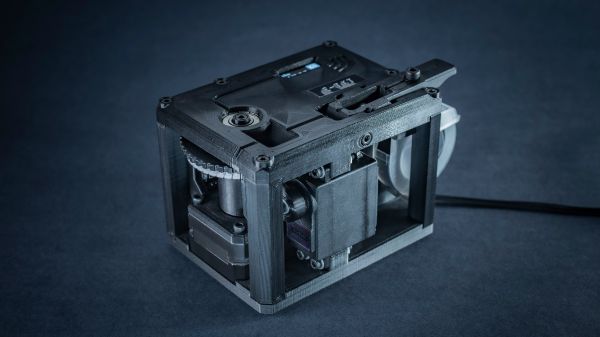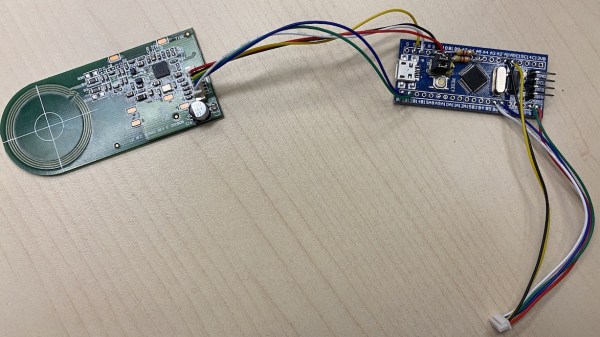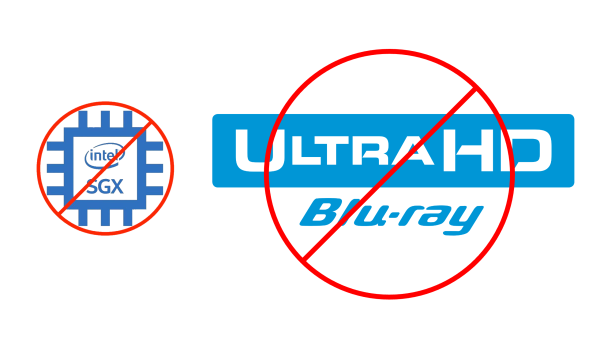With a long history of nearly universal hate for their products, you’d think printer manufacturers would by now have found ways to back off from the policies that only seem to keep aggravating customers. But rather than make it a financially wiser decision to throw out a printer and buy a new one than to buy new ink cartridges or toners, manufacturers keep coming up with new and devious ways to piss customers off. Case in point: Hewlett-Packard now seems to be bricking printers with third-party ink cartridges. Reports from users say that a new error message has popped up on screens of printers with non-HP cartridges installed warning that further use of the printer has been blocked. Previously, printers just warned about potential quality issues from non-HP consumables, but now they’re essentially bricked until you cough up the money for legit HP cartridges. Users who have contacted HP support say that they were told the change occurred because of a recent firmware update sent to the printer, so that’s comforting.
drm63 Articles
Hackaday Links: December 18, 2022
By now everyone has probably seen the devastation wrought by the structural failure of what was once the world’s largest free-standing cylindrical aquarium. The scale of the tank, which until about 5:50 AM Berlin time on Friday graced the lobby of the Raddison Blu hotel, was amazing — 16 meters tall, 12 meters in diameter, holding a million liters of saltwater and some 1,500 tropical fish. The tank sat atop a bar in the hotel lobby and was so big that it even had an elevator passing up through the middle of it.
But for some reason, the tank failed catastrophically, emptying its contents into the hotel lobby and spilling the hapless fish out into the freezing streets of Berlin. No humans were killed by the flood, which is miraculous when you consider the forces that were unleashed here. Given the level of destruction, the displaced hotel guests, and the fact that a €13 million structure just up and failed, we’re pretty sure there will be a thorough analysis of the incident. We’re pretty interested in why structures fail, so we’ll be looking forward to finding out the story here.
Hackaday Links: July 31, 2022
Don’t look up! As of the time of this writing, there’s a decent chance that a Chinese Long March 5B booster has already completed its uncontrolled return to Earth, hopefully safely. The reentry prediction was continually tweaked over the last week or so, until the consensus closed in on 30 Jul 2022 at 17:08 UTC, give or take an hour either way. That two-hour window makes for a LOT of uncertainty about where the 25-ton piece of space debris will end up. Given the last prediction by The Aerospace Corporation, the likely surface paths cover a lot of open ocean, with only parts of Mexico and South America potentially in the crosshairs, along with parts of Indonesia. It’s expected that most of the material in the massive booster will burn up in the atmosphere, but with the size of the thing, even 20% making it to the ground could be catastrophic, as it nearly was in 2020.
[Update: US Space Command confirms that the booster splashed down in the Indian Ocean region at 16:45 UTC. No word yet on how much debris survived, or if any populated areas were impacted.]
Good news, everyone — thanks to 3D printing, we now know the maximum height of a dive into water that the average human can perform without injury. And it’s surprisingly small — 8 meters for head first, 12 meters if you break the water with your hands first, and 15 meters feet first. Bear in mind this is for the average person; the record for surviving a foot-first dive is almost 60 meters, but that was by a trained diver. Researchers from Cornell came up with these numbers by printing models of human divers in various poses, fitting them with accelerometers, and comparing the readings they got with known figures for deceleration injuries. There was no mention of the maximum survivable belly flop, but based on first-hand anecdotal experience, we’d say it’s not much more than a meter.
Humans have done a lot of spacefaring in the last sixty years or so, but almost all of it has been either in low Earth orbit or as flybys of our neighbors in the Sol system. Sure we’ve landed plenty of probes, but mostly on the Moon, Mars, and a few lucky asteroids. And Venus, which is sometimes easy to forget. We were reminded of that fact by this cool video of the 1982 Soviet landing of Venera 14, one of only a few attempts to land on our so-called sister planet. The video shows the few photographs Venera 14 managed to take before being destroyed by the heat and pressure on Venus, but the real treat is the sound recording the probe managed to make. Venera 14 captured the sounds of its own operations on the Venusian surface, including what sounds like a pneumatic drill being used to sample the regolith. It also captured, as the narrator put it, “the gentle blow of the Venusian wind” — as gentle as ultra-dense carbon dioxide hot enough to melt lead can be, anyway.
DIY Automated Printer Kerchunks Out Classic Embossed Labels
For our money, the best label for pretty much any purpose is one of those embossed Dymo-style stick-on labels, the kind with the raised white letters. There’s just something about them — the raised letters just beg to be touched, their legibility is outstanding, they lend an unmatched retro feel to a project, and the experience of creating one with one of those manual kerchunkers is oddly satisfying.
But alas, those manual label makers aren’t what they used to be, as [Andrei Speridião] discovered when his fell apart in his hands. Rather than complain, he automated his label maker and turned it into a computer peripheral. Dubbed “E-TKT”, the DIY label printer takes the daisy-wheel embossing die from his defunct labeler and puts it under computer control. Rather than the ratchet mechanism of the original, a stepper motor advances the tape, another stepper rotates the wheel to the correct position, and a servo does the kerchunking duty. The process repeats until the label is complete and neatly cut off, ready to apply. An ESP32 runs the mechanism and serves up a web application to compose labels and control the printer. There’s also an OLED display and, of course, an embossed label. Video demo below.
We don’t care what [Bart Simpson] thinks, embossed labels are cool, and this makes them even cooler. And as [Andrei] points out, this is also a neat way around the nasty DRM trick that some companies are foisting on the label-making public. That alone is reason to cheer this project on — but we won’t complain about the beautiful photography and excellent documentation, either.
Continue reading “DIY Automated Printer Kerchunks Out Classic Embossed Labels”
#FreeDMO Gets Rid Of DYMO Label Printer DRM
DYMO 550 series printer marketing blurb says “The DYMO® LabelWriter® 550 Turbo label printer comes with unique Automatic Label Recognition™”, which, once translated from marketing-ese, means “this printer has DRM in its goshdarn thermal stickers”. Yes, DRM in the stickers that you typically buy in generic rolls. [FREEPDK] didn’t like that, either, and documents a #FreeDMO device to rid us of yet another consumer freedom limitation, the true hacker way.
The generic BluePill board and two resistors are all you need, and a few extra cables make the install clean and reversible – you could definitely solder to the DYMO printer’s PCBs if you needed, too. Essentially, you intercept the RFID reader connections, where the BluePill acts as an I2C peripheral and a controller at the same time, forwarding the data from an RFID reader and modifying it – but it can also absolutely emulate a predetermined label and skip the reader altogether. If you can benefit from this project’s discoveries, you should also take a bit of your time and, with help of your Android NFC-enabled phone, share your cartridge data in a separate repository to make thwarting future DRM improvements easier for all of us. Continue reading “#FreeDMO Gets Rid Of DYMO Label Printer DRM”
Hackaday Links: February 27, 2022
If there’s one thing that can trigger people, it’s the printer racket. Printer manufacturers who put DRM-like features into their consumables are rightly viewed as Satan’s spawn, and while these monsters have been content so far to only put digital rights management features into their ink and toner cartridges, they appear to now have their rapacious gaze set on print media too. At least according to the good folks over at the Electronic Frontier Foundation, who claim that Dymo’s latest generation of label printers will have RFID tags in the label cartridges, apparently to prevent consumers from buying non-Dymo media. The company doesn’t bill it as a way to lock you into their exorbitantly priced consumables, of course; rather, this is an exciting new feature that’s called “Automatic Label Recognition,” which keeps track of what labels are installed and how many are left. Of course, this is just red meat to people like us, and we fully expect to see workarounds in the not-to-distant future.
SGX Deprecation Prevents PC Playback Of 4K Blu-ray Discs
This week Techspot reported that DRM-laden Ultra HD Blu-ray Discs won’t play anymore on computers using the latest Intel Core processors. You may have skimmed right past it, but the table on page 51 of the latest 12th Generation Intel Core Processor data sheet (184 page PDF) informs us that the Intel Software Guard Extensions (SGX) have been deprecated. These extensions are required for DRM processing on these discs, hence the problem. The SGX extensions were introduced with the sixth generation of Intel Core Skylake processors in 2015, the same year as Ultra HD Blu-ray, aka 4K Blu-ray. But there have been numerous vulnerabilities discovered in the intervening years. Not only Intel, but AMD has had similar issues as we wrote about in October.
This problem only applies to 4K Blu-ray discs with DRM. Presumably any 4K discs without DRM will still play, and of course you can still play the DRM discs on older Intel processors. Do you have a collection of DRM 4K Blu-ray discs, and if so, do you play them via your computer or a stand-alone player?














